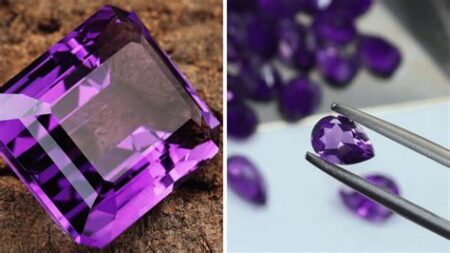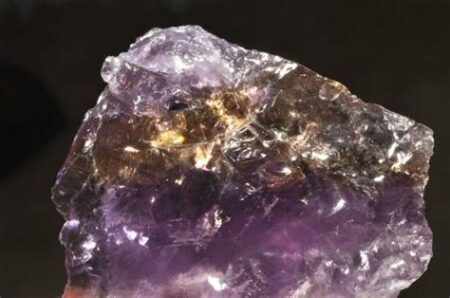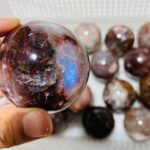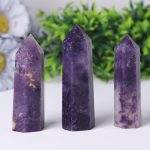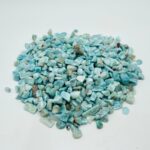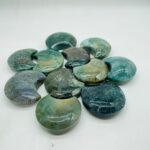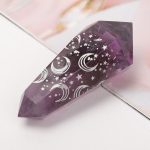White translucent rocks, often referred to as milky quartz or chalcedony, are captivating gemstones that have captivated civilizations for centuries. Their unique translucent glow and ethereal appearance have made them highly sought-after for jewelry, art, and decorative purposes.

The Allure of White Translucent Rocks
The beauty of white translucent rocks lies in their ability to transmit light while diffusing it softly. This interplay creates a milky, ethereal glow that is both alluring and calming. The soft, milky hue of these gemstones complements a wide range of skin tones and outfits, making them versatile and timeless.
White translucent rocks are also known for their exceptional durability. Moh’s scale of mineral hardness rates them as 7 out of 10, making them scratch-resistant and ideal for everyday wear and handling. Their durability ensures that these gemstones will retain their beauty for generations to come.
Types of White Translucent Rocks
There are several types of white translucent rocks, each with its unique characteristics:
- Milky Quartz: The most common type of white translucent rock is milky quartz. It is a variety of crystalline quartz that contains tiny fluid-filled inclusions, giving it its milky appearance.
- Chalcedony: Chalcedony is a microcrystalline variety of quartz that forms in masses or bands. It is known for its translucent appearance and often exhibits a subtle bluish tint.
- Opal: Opal is a unique white translucent rock that displays a play of colors called iridescence. This phenomenon occurs due to the microscopic structure of opal, which consists of tiny silica spheres that diffract light.
- Moonstone: Moonstone is a type of feldspar that exhibits a white translucent glow and a shimmering effect known as adularescence. This effect is caused by the presence of tiny inclusions or layers of other minerals within the feldspar.
Applications of White Translucent Rocks
The versatility of white translucent rocks extends beyond their use in jewelry and art. These gemstones have found applications in various industries and disciplines:
- Jewelry: White translucent rocks are widely used in jewelry making. Their ethereal glow and durability make them ideal for pendants, earrings, bracelets, and rings.
- Art: White translucent rocks have been used in art for centuries. They are often carved into sculptures, figurines, and decorative pieces.
- Crystals: White translucent rocks are also popular as energy crystals. They are believed to have healing properties and are used in meditation and spiritual practices.
- Industry: White translucent rocks are used in the production of optical instruments, such as lenses and prisms. They are also used as a filler in paints, coatings, and plastics.
Benefits of White Translucent Rocks
The benefits of owning white translucent rocks are numerous:
- Aesthetics: White translucent rocks add a touch of elegance and beauty to any setting. Their milky glow and ethereal appearance create a calming and inviting atmosphere.
- Durability: White translucent rocks are highly durable, making them suitable for everyday wear and demanding applications.
- Versatility: These gemstones can be used in a wide range of applications, from jewelry and art to crystals and industry.
- Emotional Benefits: White translucent rocks are believed to have calming and soothing properties. They are often used to reduce stress and anxiety and promote relaxation.
Tips for Choosing and Caring for White Translucent Rocks
When choosing white translucent rocks, it is important to consider the following factors:
- Clarity: Look for rocks with good clarity and minimal inclusions.
- Color: The hue of white translucent rocks can vary slightly. Choose a rock with a color that complements your personal style and intended use.
- Shape and Size: Consider the shape and size of the rock based on your intended application.
- Treatment: Some white translucent rocks are treated to enhance their color or clarity. Choose a rock that has been treated ethically and responsibly.
To care for white translucent rocks, follow these tips:
- Cleaning: Clean your rocks regularly using mild soap and water. Avoid using harsh chemicals or abrasives.
- Storage: Store your rocks in a cool, dry place away from direct sunlight.
- Protection: Protect your rocks from scratches and impacts by storing them in a padded box or container.
Conclusion
White translucent rocks are gemstones of remarkable beauty and versatility. Their ethereal glow, exceptional durability, and wide range of applications make them a valuable addition to any collection or project. Whether used for jewelry, art, or healing, these gemstones continue to captivate and inspire with their unique and captivating presence. As technology advances and our understanding of the world around us deepens, it is likely that even more applications for these remarkable rocks will be discovered.
Tables
Table 1: Moh’s Scale of Hardness for White Translucent Rocks
| Mineral | Hardness |
|---|---|
| Milky Quartz | 7 |
| Chalcedony | 7 |
| Opal | 5.5-6.5 |
| Moonstone | 6-6.5 |
Table 2: Chemical Composition of White Translucent Rocks
| Mineral | Chemical Composition |
|---|---|
| Milky Quartz | SiO2 (silicon dioxide) |
| Chalcedony | SiO2 (silicon dioxide) |
| Opal | SiO2nH2O (hydrated silicon dioxide) |
| Moonstone | KAlSi3O8 (potassium aluminum silicate) |
Table 3: Applications of White Translucent Rocks
| Industry | Application |
|---|---|
| Jewelry | Pendants, earrings, bracelets, rings |
| Art | Sculptures, figurines, decorative pieces |
| Crystals | Energy crystals for meditation and spiritual practices |
| Industry | Lenses, prisms, paints, coatings, plastics |
Table 4: Tips for Choosing and Caring for White Translucent Rocks
| Tip | Purpose |
|---|---|
| Clarity | Choose rocks with good clarity and minimal inclusions. |
| Color | Select a rock with a color that complements your personal style and intended use. |
| Shape and Size | Consider the shape and size of the rock based on your intended application. |
| Treatment | Choose a rock that has been treated ethically and responsibly. |
| Cleaning | Clean your rocks regularly using mild soap and water. |
| Storage | Store your rocks in a cool, dry place away from direct sunlight. |
| Protection | Protect your rocks from scratches and impacts by storing them in a padded box or container. |

